Though children are not physically ready to write before school, there are certain skills that can prepare them to use words and ideas when they have to put their thoughts on paper. The following article provides strategies to nurture foundation skills that will support writing skills in children.
Read
Developing reading comprehension is one of the surest ways to set the stage for writing. The more a child is familiar with words and phrases, the more confident they will be in using their own language to interact with the world. This can happen only when kids are read to consistently followed by ample reading on their own.
- Keep enough books in different shapes, colours, and topics within easy reach.
- Encourage them to choose their own books to read or at least flip through.
- As you read with the children, ask questions about what is going on in the story and what they think will happen in the end.
- Invite children to use describe a character or the setting in their own words.
- All this will help them build comprehension and expand vocabulary which is bound to come in handy when they start writing.
Support Fine and Gross Motor Skills
Writing requires a fine-tuning of both gross and fine motor skills. So include enough fun physical activities that invite the children to use their limbs and various muscles.
- Picking objects up and dropping them in designated bins, reaching for things kept a bit high or touching their knees and toes with their hands would build their gross motor skills.
- Likewise have attractive experiences where kids can paint, draw, shape play dough, paste stickers and cut out fun shapes. These will not just enhance their fine motor skills but introduce narratives – for example using a scrapbook to describe a birthday – that can be expressed in writing later.
Notice The World
The world around us is so animated with visual texts that we don’t even it notice them anymore.
- Point out to children logos of their favourite foods and trainers which are usually attractive combinations of letters and designs.
- See if children can recognise common traffic signs, general symbols like the rising sun or billboards with movie stars.
- Use product and brand names on objects like cereal boxes to note how words are written from left to right and top to bottom.
All this will deepen their awareness of visual cues and texts which in turn will lay a strong base for writing skills.
Shapes and Letters
A great way to build foundational writing skills is to practise lines and shapes on which so many letters are based.
- Straight and slanting lines, curves, ovals and circles as well as basic triangles are a great way to get children ready to write.
- Instead of going the pencil and paper way, introduce an element of fun by letting them trace such shapes on a sandbox, flour-filled tray or rice bin.
- Similarly, think of games that involve your learners recognising the letters in their names or having to sort letters in the correct order after you have displayed a word.
In all these ways, you can put in place sturdy foundation skills that will help your learners to look forward to trying their hand at writing.
Further Reading
Pre-Writing Skills - The following article provides information on pre-writing tasks, when to start pre-writing skills, holding a pencil correctly, development of fine motor skills and more.
Pre-Writing Skills Activities For Preschoolers - The following article provides information on Pre-Writing Skills Activities, Benefits Of Pre-Writing Skills and more.
Drawing And Talking In Early Writing Development - The following article provides information on the role of drawing and talking in early writing development.


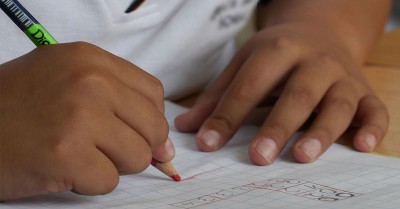
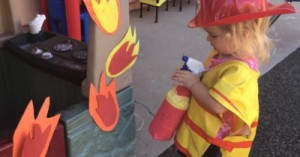



 Open ended questions cannot be responded to with one word answers such as yes or no. These types of questions enables a child to provide
Open ended questions cannot be responded to with one word answers such as yes or no. These types of questions enables a child to provide During your child’s preschool years, an important milestone begins to emerge. This is the development of pre-writing skills. Pre-writing skills are used to encourage, develop
During your child’s preschool years, an important milestone begins to emerge. This is the development of pre-writing skills. Pre-writing skills are used to encourage, develop Open ended materials enables children to play freely. They are objects that have no rules to follow, use or function. Raw materials that can be
Open ended materials enables children to play freely. They are objects that have no rules to follow, use or function. Raw materials that can be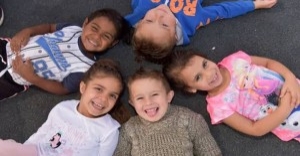 An Acknowledgment of the Country is a way of showing respect for the Traditional Owners and can be given by both non-Indigenous people and Aboriginal
An Acknowledgment of the Country is a way of showing respect for the Traditional Owners and can be given by both non-Indigenous people and Aboriginal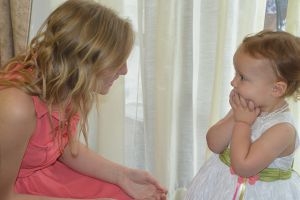 Language plays an important role in a child’s development. It enables a child to communicate effectively with their family, learn at school, socialize with friends,
Language plays an important role in a child’s development. It enables a child to communicate effectively with their family, learn at school, socialize with friends, Like adults, children have to deal with their own stress in life. Moving house, starting a new school, preparing for a new sibling - these are
Like adults, children have to deal with their own stress in life. Moving house, starting a new school, preparing for a new sibling - these are Playdough is such a versatile material. It provides numerous benefits to children as they manipulate it, it is safe and soothing and provides children with
Playdough is such a versatile material. It provides numerous benefits to children as they manipulate it, it is safe and soothing and provides children with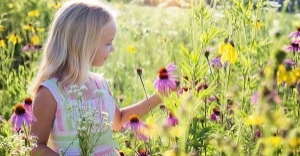 Teaching children about sustainability enables them to appreciate and respect the natural environment. Early childhood services can provide meaningful hand on learning experiences in order
Teaching children about sustainability enables them to appreciate and respect the natural environment. Early childhood services can provide meaningful hand on learning experiences in order Recycling is an important concept that teaches children to care for the environment. It encourages children to be responsible and show a growing appreciating for
Recycling is an important concept that teaches children to care for the environment. It encourages children to be responsible and show a growing appreciating for When children apply paint to paper, glue things together, or pound a lump of clay, they experiment with colour, shape design and texture.
When children apply paint to paper, glue things together, or pound a lump of clay, they experiment with colour, shape design and texture.



